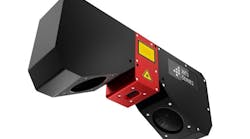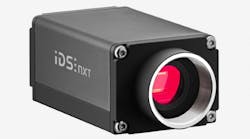Walaris (Peachtree Corners, GA, USA) has developed a high-tech solution to a growing problem: flying contraband into prisons via drones.
Smuggling contraband into prisons is a long-standing, ever-changing problem, say those in the know. However, with drone technology becoming more common and affordable—more than 500,000 recreational drones are currently registered with the Federal Aviation Administration—the addition of drones to this ongoing game of whack-a-mole is a fairly recent and disturbing development.
Prison officials are aware of the new threat from drones; indeed, a number of corrections facilities and departments, such as the S.C. Department of Corrections (Columbia, SC, USA), have taken steps to specifically address this aspect of the smuggling problem.
However, until recently, fighting illegal drone activity has generally involved using radio frequency-based systems to detect communication between drone pilot and drone. These systems have been successful, however, as technology evolves and bad actors learn to adapt, these existing systems are becoming less effective.
“Traditional drone detection systems rely on libraries to match signals and detect known drone platforms they’ve encountered before,” Walaris Co-founder/CEO Kyle Meloney says. “So, the perpetrators have started using lesser-known drones and sometimes even repurposed drones, making them more difficult to detect, track, and identify using traditional means.”
Not only are off-brand, hybrid, or repurposed drones difficult to detect, much less identify, the criminal operators have learned to simply turn off communication between themselves and the drone, instead programming them to drop their contraband load based on pre-programmed GPS coordinates.
Goals and Challenges
Walaris set out to design a more comprehensive drone detection system, Meloney says.
“One of the big advantages to our approach is that our camera detection technology, unlike many others, is not based on motion or contrast in field of view but on extensive AI algorithms,” Meloney says.
They wanted to develop AI computer vision software that could extract enough information to detect, track, and classify small, nimble objects such as drones at longer tactical ranges and in difficult conditions, including poor light, cluttered environments, and inclement weather. They also wanted to ensure the software did not produce false positives or negatives in those conditions.
How it Works
Walaris ultimately developed its AirScout UAV detection system. There are currently two products: AirScout Sentry and AirScout Verify.
AirScout Sentry is the company’s complete end-to-end solution. It usually has 4-6 multispectral cameras deployed for initial detection, although some systems can have as many as 30, covering a 90° quadrant, serving as a primary detection system. It is deployed in a rugged enclosure attached to a pole structure on a prison’s property. These cameras are typically deployed at a fixed field of view. A PTZ (point, tilt, zoom) camera, upon alert by the initial detection cameras, acquires, analyzes and identifies the object using AirScout AI software, developed and written in-house by Walaris.
Once the software classifies the detected object as a drone, it sends an alert to the system operator at the prison, along with full-motion video of the threat, so the operator can decide how to handle the situation. This all happens, essentially, in real time, Meloney says.
The AI models, already very extensively researched and developed, are constantly being updated, Meloney notes.
A command and control (C2) software system provides a user interface and situational map for an operator.
AirScout Verify is the company’s second option. It deploys one PTZ camera and is integrated with another primary detection system, such as radar, that the prison already owns. But otherwise, it works similarly to Sentry in that the primary detection system alerts the PTZ camera, which acquires, tracks, and classifies the object detected and sends an alert if it is determined to be a threat.
Both systems are slew-to-cue, which means the system requires a cue, such as a moving object in the air, to trigger its action. In the case of AirScout Verify, the existing system, which is often radar, serves as the “cue” to activate Verify’s PTZ camera,
Both Sentry and Verify usually are deployed with an AXIS Communications Q6225 PTZ camera with near infrared illuminators to capture images at night, or a Bosch MIC IP Fusion 9000i dual daytime and thermal infrared camera, which is capable of detecting objects up to 4,517 meters away. Both cameras are robust and more budget friendly than similar higher end military-grade components, which is helpful for civilian entities such as corrections facilities, which often operate on more modest budgets, Meloney says.
When Sentry or Verify’s detection system tells the PTZ camera the initial location of a detected object, the software positions the camera to target the detected object’s airspace, then analyzes the camera’s images to locate and capture the object’s precise coordinates. A PTZ algorithm triggers the camera to zoom in on the coordinates to further investigate the object while AI and range-to-focus control algorithms enable the system to acquire the target, maintain a clear image, and classify it.
The system tracks only verified drone threats, ignoring objects not considered a threat, such as birds, Meloney says.
Both systems are physically connected rather than wireless, as prisons do not allow wireless communications within their spaces. A custom-configured CoastIPC (Hingham, MA, USA) computer, deployed nearby the camera system, equipped with an NVIDIA graphics processing unit (GPU), runs the entire system, Meloney says. The system is wired together with cable and all software runs locally to minimize latency, since drones are nimble and cloud-type latency would make tracking them impossible, he says.
The system works autonomously, only sending an alert to the operator at the C2 center if an actual threat is detected.
“The primary goal is interdiction – we want to know where the drone is and intercept the contraband before an inmate or inside accomplice can get to it,” Meloney says. “A longer-term goal, of course, is to track that drone back and arrest the operator.”
Walaris has been primarily a military contractor, so this foray into the civilian customer base, such as prisons and corrections institutions, is a recent addition to the company’s business focus.
“Using an integrated sensor set that includes EO/IR cameras (electro-optical/infrared), radar, and other military-grade technology at a prison is a new concept,” Meloney says. “These are complex technologies and being able to run these systems fully autonomously as a force multiplier at prisons and have them work reliably against the full spectrum of drone threats is a novel concept.”
However, Meloney says the company is seeing significant success in the non-military market and expects strong growth in the future. Indeed, in the past 18 months the company has deployed some 20 systems in prisons in the U.S. and Europe, with about the same number scheduled for deployment in the upcoming year.






